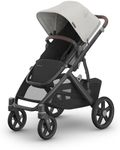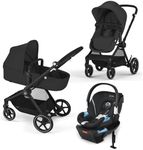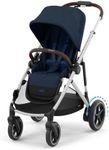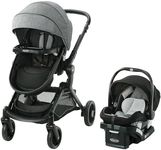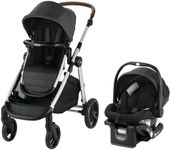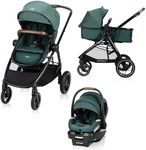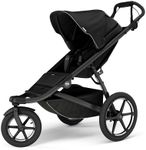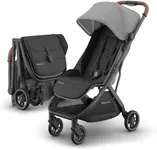Buying Guide for the Best Baby Strollers
Choosing the right baby stroller is an important decision for parents and caregivers, as it directly affects your daily convenience and your child's comfort and safety. The best stroller for you depends on your lifestyle, where you plan to use it, and your child's age and needs. Before making a choice, think about how often you'll use the stroller, whether you'll be navigating city sidewalks, parks, or rougher terrain, and how much space you have for storage and transport. Understanding the key features will help you find a stroller that fits seamlessly into your routine.Stroller TypeStroller type refers to the overall design and intended use of the stroller, such as full-size, lightweight/umbrella, jogging, travel system, or double stroller. This is important because each type is built for different situations: full-size strollers are versatile and comfortable for everyday use, lightweight strollers are easy to carry and ideal for travel, jogging strollers are designed for running and rougher terrain, travel systems combine a stroller with an infant car seat, and double strollers accommodate two children. To pick the right type, consider your main activities—if you travel a lot, a lightweight or travel system might be best; for daily walks or errands, a full-size or jogging stroller could be more suitable.
Weight and FoldabilityWeight and foldability describe how heavy the stroller is and how easily it can be folded for storage or transport. This matters because a lighter, more compact stroller is easier to carry, lift into a car, or store in small spaces, while heavier strollers may offer more features but can be cumbersome. Strollers can range from ultra-light models under 15 pounds to full-size options over 25 pounds. If you need to carry the stroller up stairs or travel frequently, a lighter, easily foldable model is ideal. If you have plenty of storage and prioritize features, a heavier stroller may work for you.
Wheel Type and SuspensionWheel type and suspension refer to the design and material of the wheels and the system that absorbs shocks from bumps. This is important for your child's comfort and how smoothly the stroller moves. Small plastic wheels are best for smooth surfaces like malls, while larger, air-filled or rubber wheels with good suspension are better for rough terrain or jogging. If you mostly use the stroller on city sidewalks or indoors, basic wheels are fine. For outdoor adventures or running, look for larger wheels and strong suspension.
Seat Recline and AdjustabilitySeat recline and adjustability describe how far back the seat can tilt and whether it can be adjusted to different positions. This matters for your child's comfort, especially for naps on the go or for younger babies who need to lie flat. Some strollers offer multiple recline positions, while others have only a few. If your child will nap in the stroller or is still an infant, look for a model with a deep or fully flat recline. For older children who sit upright, fewer positions may be sufficient.
Safety FeaturesSafety features include the harness system, brakes, and stability of the stroller. These are crucial for keeping your child secure. Most strollers have a five-point harness, which is the safest option, and reliable brakes that lock the wheels. Some also have wrist straps for jogging. Always check that the stroller feels stable and that the safety features are easy to use. If you plan to jog or use the stroller on slopes, pay extra attention to the brake system and harness quality.
Storage and AccessoriesStorage and accessories refer to the space available for carrying items like diaper bags, groceries, and personal belongings, as well as extras like cup holders, sun canopies, and rain covers. This is important for convenience, especially on longer outings. Strollers vary from minimal storage to large baskets and multiple pockets. If you often carry a lot with you, look for a stroller with a roomy basket and useful accessories. If you travel light, a simpler model may be enough.
Age and Weight LimitAge and weight limit indicate the range of child sizes the stroller can safely accommodate. This is important to ensure your child fits comfortably and safely as they grow. Some strollers are suitable from birth, while others are designed for older babies or toddlers. Check the manufacturer's guidelines and think about how long you want to use the stroller. If you want a stroller that lasts through multiple stages, choose one with a higher weight limit and newborn compatibility.
